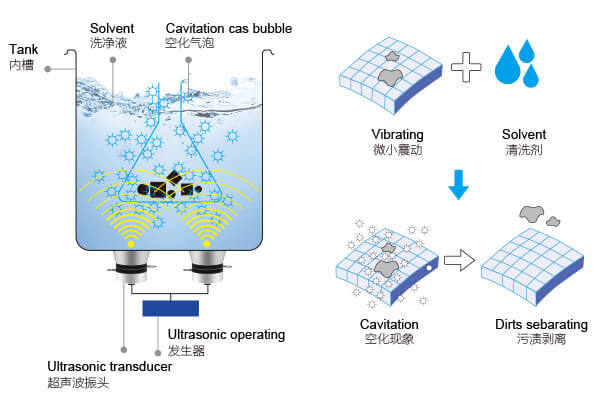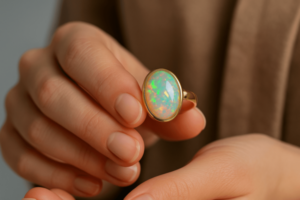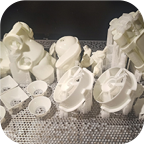Understanding the Safety of Ultrasonic Cleaners
Browse Volume:14 Classify:Support
Ultrasonic cleaners have gained popularity across industries for their ability to clean objects thoroughly and efficiently. From removing carbon build-up on engine parts to lifting dirt from delicate jewelry, these machines have transformed the way people clean items that are otherwise hard to reach or fragile to handle manually.
At the heart of ultrasonic cleaning is a process called cavitation. This occurs when high-frequency sound waves—usually in the range of 20 to 200 kilohertz—are transmitted through a liquid. These sound waves create microscopic bubbles that rapidly form and collapse. When they collapse, they release localized energy that dislodges contaminants from the surface of the submerged item.

The Principle Behind Ultrasonic Cleaning
Ultrasonic cleaners consist of a tank filled with water or a cleaning solution, along with piezoelectric transducers that generate the ultrasonic vibrations. These transducers are usually mounted to the bottom or sides of the tank and convert electrical energy into mechanical vibrations.
The result is a non-abrasive, contactless cleaning process that’s suitable for everything from surgical instruments and circuit boards to eyeglasses and antique coins. Because the cleaning is mechanical at a microscopic level, it can access tiny crevices and corners that manual cleaning tools cannot reach.
Despite its effectiveness, ultrasonic cleaning involves high-energy phenomena in both mechanical and chemical forms. This leads to a common question—is it dangerous? The answer depends on who’s using it, how it’s used, and what materials or substances are involved.
Are Ultrasonic Cleaners Dangerous to Humans?
Ultrasonic cleaners are generally considered safe when used as intended. However, they do carry certain risks that users should be aware of—especially when operated in industrial environments, or when safety guidelines are overlooked.
Contact with the Solution While the Machine Is Running
A frequent question is whether it’s safe to put your hand into the tank while the ultrasonic cleaner is operating. While ultrasonic waves don’t penetrate deeply into human tissue, the collapse of cavitation bubbles at the surface of the skin can cause localized irritation or discomfort. The sensation may feel like tingling or mild stinging, and repeated exposure could lead to tissue fatigue or inflammation over time.
That said, the real risk isn’t from the ultrasonic waves themselves, but from:
- Heated cleaning solutions that can cause burns
- Chemicals in the solution that may irritate or damage skin
- Electrical hazard if the machine is not properly grounded or is operated near spilled liquids
For this reason, it’s best to never place hands directly into the tank while it’s operating. Use baskets or tweezers to handle objects, and wear gloves when dealing with used cleaning fluid.
Hearing Risks from Ultrasonic Noise
Although ultrasonic cleaners emit sound waves above the range of human hearing, some models produce audible byproducts—a high-pitched, whining noise that occurs due to harmonics or vibrations in the tank walls. Prolonged exposure to this noise, especially at lower frequencies like 25 or 28 kHz, can be uncomfortable or even damaging to hearing.
In industrial settings, technicians may be exposed to ultrasonic cleaner noise for several hours a day. In such cases, hearing protection such as earplugs or sound-dampening enclosures is recommended. The U.S. Occupational Safety and Health Administration (OSHA) recommends limiting exposure to sounds above 85 decibels, which some large ultrasonic cleaners may exceed during operation (OSHA Hearing Conservation Guidelines).
Exposure to Cleaning Solutions
Some cleaning solutions used in ultrasonic cleaners contain alkalines, solvents, or surfactants that can cause:
- Skin irritation
- Respiratory discomfort
- Eye injuries from splashes or vapors
Although many modern cleaning agents are formulated to be non-toxic and biodegradable, improper dilution, inadequate ventilation, or excessive use of heating functions can increase risk. Users should always read the safety data sheet (SDS) for any solution used, and wear proper personal protective equipment (PPE) such as gloves and goggles.
Long-Term Exposure in Industrial and Lab Environments
In factories, research labs, and dental clinics, ultrasonic cleaners are used daily—sometimes continuously. While the machines themselves are usually enclosed and ventilated, repetitive low-level exposure to heat, aerosolized chemicals, and ultrasonic vibrations may pose health concerns over the long term if not properly managed.
For example:
- Lab personnel working near open ultrasonic baths may inhale vaporized solvents
- Operators may suffer fatigue or headaches from exposure to high-frequency noise
- Electricians or maintenance staff could be exposed to shock risk if machines are serviced while live
For these reasons, safety protocols in industrial environments often include:
- Equipment placement in ventilated or isolated areas
- Use of fume hoods or localized exhaust systems
- Enforcement of daily safety checks and maintenance schedules
Can Ultrasonic Cleaners Damage Items Being Cleaned?
While ultrasonic cleaners are designed to be gentle and non-abrasive, not all items respond equally well to ultrasonic cavitation. In fact, the very power that makes these machines so effective at cleaning can sometimes pose a risk to delicate materials, especially if the frequency, power level, or cleaning duration are not properly matched to the object being cleaned.
Fragile or Porous Materials
Some materials are inherently fragile or porous, making them vulnerable to the mechanical forces of cavitation bubbles. For instance:
- Soft gemstones like opals, turquoise, and lapis lazuli can fracture or craze
- Porous ceramics or unsealed stone may absorb fluid or crack under vibration
- Organic materials such as ivory or bone can degrade, discolor, or soften

Opal
In these cases, ultrasonic cleaning is generally not recommended. Even short exposure times at high frequencies can cause permanent damage, especially when combined with heated cleaning solutions.
Delicate Electronics and Optical Components
Ultrasonic cleaning is frequently used in electronics manufacturing and optics labs, but it requires strict control over process parameters.
For example:
- Printed circuit boards (PCBs) can suffer from trace delamination, particularly if they have poorly bonded layers or aged solder joints
- Sensors, microchips, or LED components may become dislodged or waterlogged
- Lens coatings on cameras, microscopes, or binoculars may degrade when exposed to vibration and heat
To minimize these risks, professionals often use:
- High-frequency units (above 80 kHz)
- Short cycle times (under 3 minutes)
- Specialized cleaning solutions formulated for electronics and optics
Without these precautions, cleaning fragile tech components in an ultrasonic cleaner can result in reduced performance, fogging, or outright failure.
Surface Damage to Jewelry, Watches, or Plated Items
Jewelry is one of the most common items cleaned ultrasonically—but not all pieces are suitable.
- Plated metals (e.g., gold-plated watches or silver-plated chains) can lose their finish due to cavitation erosion.
- Settings with glued stones may fail, causing gems to fall out
- Soft metals like aluminum can pit or discolor over time

jewelry cleaner
Even hard stones like diamonds are not immune. If a diamond has internal inclusions or fractures, ultrasonic vibration can worsen the cracks or lead to unexpected chipping, particularly in lower-quality or heavily included stones.
To avoid such outcomes, users should inspect their items for:
- Weak prongs
- Loose joints
- Signs of glue or filler
- Aging or wear-related flaws
When in doubt, manual cleaning with a brush and mild soap is the safer route.
Is Ultrasonic Cleaning Safe for the Environment?
Ultrasonic cleaning itself is a mechanical process, and in its purest form—using just distilled water—it has no negative environmental impact. However, when combined with certain cleaning agents, improper disposal methods, or inefficient energy use, it can become less eco-friendly.
Wastewater and Chemical Disposal
The most significant environmental concern tied to ultrasonic cleaners is the disposal of used cleaning solutions.
Many users add:
- Alkaline cleaners
- Solvent-based degreasers
- Oxidizing agents or chelators
Once contaminated with oil, grease, heavy metals, or other industrial byproducts, these solutions must be disposed of according to local environmental regulations. Pouring them down the drain can lead to:
- Waterway contamination
- Bioaccumulation in aquatic life
- Soil damage from toxic runoff
Industrial users often implement wastewater treatment or neutralization systems before disposal. Home users should consult municipal guidelines for household chemical waste disposal.
Emissions and Volatile Compounds
When cleaning solutions are heated, they can emit volatile organic compounds (VOCs) or chemical vapors, depending on the formulation. These emissions, though small in scale, contribute to:
- Indoor air pollution
- Worker exposure to respiratory irritants
- Environmental smog formation (in high-volume industrial contexts)
To mitigate this, many facilities:
- Use closed-lid ultrasonic cleaners
- Operate within ventilated fume hoods
- Switch to biodegradable, low-VOC detergents
Energy Use and Equipment Efficiency
Ultrasonic cleaners require electricity to power both the transducers and any integrated heating elements. While they are not heavy energy consumers, large or industrial units running continuously can contribute to significant energy usage over time.
Energy-conscious users should look for:
- Auto shut-off features
- Energy-efficient transducer designs
- Timers and low-heat cycles when full power is not required
There is also a growing market for eco-friendly ultrasonic systems that pair low-energy components with sustainable cleaning solutions to reduce total environmental impact.
Ultrasonic Cleaner Noise: Is It Harmful?
Although ultrasonic cleaners operate at frequencies above the threshold of human hearing—typically 20 kHz and higher—they are not completely silent. The process of cavitation, combined with mechanical vibration from the transducers and tank structure, often creates secondary audible noise. In some environments, this sound can be irritating or even hazardous to human health.
Audible Components of Ultrasonic Cleaning
While humans cannot hear frequencies above 20 kHz, ultrasonic cleaners often emit:
- Subharmonics — lower-frequency sounds generated by mechanical resonance
- Tank wall vibrations — especially in lower-cost units with thinner steel walls
- High-pitched squeals — particularly common in units operating around 25–30 kHz
These noises can become quite noticeable, especially in confined spaces, and may contribute to acoustic fatigue or discomfort over long periods.
Potential Risks to Hearing
According to occupational safety standards, sustained noise exposure above 85 decibels (dB) may lead to permanent hearing loss. While most small tabletop ultrasonic cleaners stay below this threshold, larger industrial units may exceed 90–95 dB, particularly if multiple machines are running simultaneously.
Prolonged exposure in such conditions can result in:
- Tinnitus (ringing in the ears)
- Temporary or permanent hearing reduction
- Headaches or cognitive fatigue
Hearing protection—such as foam earplugs or over-ear muffs—is strongly advised in industrial setups or laboratory environments where large cleaners operate daily.
Noise Mitigation Strategies
Several strategies can reduce exposure to ultrasonic noise:
- Use of sound-dampening enclosures or covers
- Placement of cleaners in isolated or ventilated rooms
- Running units during off-hours when fewer people are present
- Choosing models with higher operating frequencies, which tend to be quieter (e.g., 68 kHz or 80 kHz units)
Manufacturers are also developing quieter transducer systems and insulation techniques to make ultrasonic cleaning safer for hearing-sensitive workspaces.
Heating Function in Ultrasonic Cleaners: Is It a Hazard?
Many ultrasonic cleaners come with integrated heating elements, which serve to increase the effectiveness of the cleaning process. Heating the cleaning solution reduces surface tension, enhances detergent action, and improves cavitation efficiency. But it also introduces a set of safety considerations.
Safe Operating Temperatures
Most ultrasonic baths are designed to operate safely within a range of 30°C to 80°C (86°F to 176°F). Temperatures above this range are typically unnecessary and may risk:
- Boiling the solution, leading to foam or vapor production
- Burns or scalds during handling
- Accelerated chemical breakdown of certain cleaning solutions
In consumer-grade models, heating may be less precise, and users may not be aware of just how hot the liquid is getting. Always check for temperature displays or use an external thermometer when cleaning heat-sensitive items.
Burn and Scalding Risks
The surface of a heated ultrasonic tank can reach temperatures hot enough to cause first- or second-degree burns if touched directly. Risks increase when:
- Lids are removed
- Gloves are not used
- The tank is accidentally spilled or overfilled
Hot cleaning solutions can also cause eye injuries if splashed. For this reason, it is essential to:
- Wear thermal-resistant gloves
- Use splash guards or tank lids
- Keep cleaners away from crowded or high-traffic areas
Thermal Stress on Delicate Items
Not all materials can handle the heat. Items made from glue-bonded composites, plastic frames, or sensitive coatings may warp, peel, or degrade when exposed to elevated temperatures.
Jewelry with adhesives, watch straps, hearing aids, and polymer casings are all examples of items that may be damaged in heated ultrasonic cleaning cycles. In such cases, room-temperature cleaning with extended cycle time is a safer option.
Managing Heating Safely
To ensure safe use of the heating function:
- Set temperature only as high as necessary
- Avoid preheating without supervision
- Let the solution cool before draining or refilling
- Follow all manufacturer-recommended temperature limits for your specific unit
While heat improves cleaning efficiency, it must be treated with the same caution as you would any hot liquid in a laboratory or workshop setting.
Chemical Safety in Ultrasonic Baths
While the ultrasonic vibrations themselves are a mechanical process, cleaning solutions used in these machines often involve chemicals that introduce their own set of safety considerations. What you put into the tank—and how you handle it—can directly impact both user health and the surrounding environment.
Common Chemical Additives and Their Hazards
Some of the most frequently used chemical agents in ultrasonic cleaning include:
- Alkaline detergents (for removing grease, oil, and oxidation)
- Solvent-based cleaners (often for degreasing metal parts)
- Acid-based solutions (for removing scale or mineral deposits)
- Surfactants and emulsifiers (to improve wetting and penetration)
These chemicals can be effective, but if improperly handled, they can:
- Irritate skin or eyes
- Produce harmful vapors, especially when heated
- Corrode tank components if used too aggressively or not diluted properly
Even some detergents marketed as “ultrasonic cleaner safe” may include ingredients that become volatile when used at high temperatures or mixed with other agents.
Exposure Risks from Vapor and Splash
When ultrasonic cleaners are used in poorly ventilated areas, especially with heated solutions, there’s a risk of inhaling vapors that can irritate the respiratory system. Prolonged exposure can lead to:
- Coughing or throat discomfort
- Dizziness or headaches
- Chronic respiratory issues in sensitive individuals
Splash exposure is also a concern, particularly when:
- Filling or draining the tank
- Removing items during a hot cycle
- Cleaning items with sharp or irregular edges that displace fluid
To reduce these risks:
- Always wear gloves and eye protection
- Work in well-ventilated environments or near local exhaust ventilation (LEV)
- Use lids to trap vapor and prevent accidental splashes
Choosing Safer Cleaning Solutions
In recent years, many manufacturers and safety-conscious users have shifted toward non-toxic, biodegradable cleaning concentrates that still deliver excellent results but with fewer health and environmental risks.
Ideal properties of safer ultrasonic cleaning solutions include:
- Neutral pH (neither strongly acidic nor basic)
- Low or no volatile organic compounds (VOCs)
- Non-flammable and non-corrosive
- Formulated specifically for ultrasonic use
Reading the Safety Data Sheet (SDS) for any solution is essential. Look for phrases such as “low toxicity,” “non-corrosive,” or “safe for indoor use.”
Safe Storage and Disposal
Even relatively mild cleaning agents must be stored and disposed of properly. Always:
- Keep solutions in clearly labeled, sealed containers
- Store away from heat and sunlight
- Dispose of used fluid according to local hazardous waste guidelines
Avoid pouring used solution down household drains unless you’re certain it’s permitted in your region. In industrial environments, disposal should be handled by licensed chemical waste processors.
Are Ultrasonic Cleaners Safe in Home Use?
Ultrasonic cleaners are no longer just tools for laboratories or repair shops—they’re now common household appliances, used to clean everything from jewelry and glasses to retainers, razors, coins, and baby items. But is this technology really safe for the average consumer?
Compact and Low-Risk Designs
Home-use ultrasonic cleaners are typically smaller, with less power and lower maximum temperatures. These limitations are intentional—they:
- Reduce the risk of overheating
- Minimize excessive noise
- Make it unlikely to cause material damage to common household items
Most consumer-grade units operate at around 40 kHz and come with preset cleaning cycles to prevent overuse.
That said, safety still depends on the user’s understanding and behavior.
Misuse Risks in Consumer Scenarios
While ultrasonic cleaners are relatively safe for home use, risks can arise from:
- Running the unit dry, which can damage the transducers
- Using the wrong solution, such as harsh household chemicals like bleach or vinegar
- Cleaning items not intended for ultrasonic use, like certain gemstones or electronics
- Touching the liquid while the machine is on (risking discomfort or shock if not grounded properly)
Additionally, many users are unaware that not all jewelry, dentures, or eyeglass coatings are compatible with ultrasonic cleaning. For example, anti-reflective coatings on lenses may degrade over time with repeated exposure.
Best Practices for Home Users
To ensure safe and effective use:
- Read the user manual before operating
- Use only solutions designed for ultrasonic cleaners
- Avoid cleaning anything fragile, glued, or made from soft organic materials
- Let the machine rest between cycles to prevent overheating
- Keep the unit on a stable, flat surface away from children
If cleaning medical items like retainers or baby pacifiers, ensure:
- The solution used is non-toxic and residue-free
- Items are thoroughly rinsed after cleaning
- The tank is disinfected regularly
Lab and Industrial Settings: Safety Protocols and Standards
In laboratories, manufacturing facilities, dental clinics, and electronics assembly lines, ultrasonic cleaners are used daily for cleaning precision instruments, tools, and components. Because these environments involve frequent, long-term exposure, safety protocols are not just recommended—they are essential.
Institutional Risk Factors
Ultrasonic cleaning in professional settings may involve:
- Multiple machines running simultaneously
- High-volume chemical use
- Extended operating hours
- Personnel working in close proximity to heated tanks and vapors
In such scenarios, even small risks (such as chemical irritation, vapor exposure, or hearing strain) can accumulate over time. Therefore, many facilities implement strict protocols to reduce hazards.
Engineering Controls
Facilities often integrate engineering controls to reduce exposure without relying solely on personal behavior. These include:
- Fume hoods or ventilated enclosures around cleaning stations
- Dedicated ultrasonic cleaning rooms, separated from main workspaces
- Noise-dampening chambers to reduce acoustic emissions
- Automated loading/unloading systems to minimize human contact with hot or hazardous liquids
These controls are typically designed to comply with workplace safety regulations such as those issued by:
- OSHA (Occupational Safety and Health Administration, US)
- HSE (Health and Safety Executive, UK)
- EU Machinery Directive (Europe)
- ANSI and IEC standards for electronic and lab equipment
Personal Protective Equipment (PPE)
Even with engineering controls in place, PPE is still essential for operators and technicians, especially when:
- Handling cleaning agents
- Working with heated ultrasonic baths
- Draining or refilling tanks
Standard PPE may include:
- Chemical-resistant gloves
- Goggles or face shields
- Lab coats or aprons
- Ear protection for noisy units
In regulated environments, PPE policies are usually outlined in standard operating procedures (SOPs) and reinforced through safety training.
Routine Safety Procedures
Safe industrial use of ultrasonic cleaners also includes:
- Daily equipment inspections to check for leaks, cracks, or electrical wear
- Documented cleaning schedules for tanks and work areas
- Regular fluid replacement based on contamination levels
- Proper labeling of all chemical containers and tanks
By following these procedures, labs and factories minimize risk, increase productivity, and ensure the long-term performance of both the ultrasonic equipment and the items being cleaned.
How to Use Ultrasonic Cleaners Safely
Whether you’re using a compact ultrasonic bath at home or operating a high-capacity unit in a professional setting, certain universal safety practices can help you avoid accidents, damage, and health risks.
Follow Manufacturer Guidelines
Every ultrasonic cleaner comes with a user manual that outlines:
- Proper setup and installation
- Compatible cleaning fluids
- Maximum temperature and fill levels
- Safety warnings and maintenance schedules
Ignoring these instructions can result in:
- Reduced cleaning performance
- Damage to items or machine components
- Personal injury
Handle Chemicals Responsibly
When adding or removing solutions:
- Wear gloves and protective eyewear
- Always dilute concentrates according to instructions
- Keep chemical containers sealed and labeled
- Never mix different chemicals unless approved by the manufacturer
Disposal should follow local environmental regulations, especially in commercial operations where large volumes are involved.
Monitor Temperature and Noise Levels
Avoid running the cleaner:
- Without liquid, which can damage the transducer
- At maximum heat, unless necessary
- Unattended, especially during long cycles
For larger machines, consider using:
- Timers with auto shut-off
- Sound enclosures to limit acoustic fatigue
- Cooling-off periods between back-to-back cycles
Avoid Direct Contact with Operating Tanks
Never reach into the ultrasonic bath while it’s active. Even if the ultrasonic energy won’t penetrate deeply into human tissue, the localized surface energy can cause discomfort or harm. Always:
- Use baskets, tweezers, or tools
- Turn off the machine before adjusting or retrieving objects
- Let heated solutions cool before draining or disposing
Secure the Work Area
To prevent spills, shocks, or tip-overs:
- Place the unit on a level, non-slip surface
- Keep cords out of walkways
- Store chemicals in cabinets when not in use
- Use child safety measures if the machine is at home
Common Misconceptions About Ultrasonic Cleaner Safety
Ultrasonic cleaning has gained a reputation for being both powerful and precise—but with its increasing use comes a fair share of misunderstandings. These misconceptions often stem from confusion between ultrasonic waves and other forms of energy or from unrealistic expectations of how the technology works.
“Ultrasonic Waves Are Radioactive or Dangerous to Health”
One of the most persistent myths is that ultrasonic waves, because they are “invisible,” might be radioactive or somehow harmful in the same way X-rays or microwaves are. In reality, ultrasonic waves are simply mechanical vibrations transmitted through a medium—usually liquid. They are:
- Non-ionizing, meaning they do not damage DNA or tissue like radiation
- Completely different from electromagnetic waves
- Confined to the liquid bath and do not travel through the air significantly
While care should be taken around the equipment, there’s no risk of radiation exposure from ultrasonic cleaning.
“Ultrasound Can Penetrate the Human Body and Harm Organs”
Medical ultrasound machines (like those used in sonograms) do transmit waves through tissue—but those are carefully tuned frequencies applied with specialized equipment. The ultrasonic waves in cleaners do not penetrate the body significantly. The cavitation effect that does the cleaning happens only in liquid, and only at very small distances from the surface of the object.
There is no evidence that typical ultrasonic cleaning units cause harm to internal organs, provided users don’t immerse their hands or other body parts in the tank during operation.
“If It’s Ultrasonic, It Must Be Sterilizing”
Another common assumption is that ultrasonic cleaning automatically kills bacteria or viruses. While ultrasonic cleaning can remove biofilm and contaminants, it does not sterilize. To truly sterilize an object, it must be treated with:
- Autoclaving
- Chemical disinfectants
- UV-C irradiation
- High-heat dry sterilization
Ultrasonic cleaning should be seen as a pre-cleaning step—removing dirt and debris before sterilization, not a replacement for it.
Expert Opinions and Research on Ultrasonic Safety
Research into the safety of ultrasonic cleaners has largely concluded that, when used correctly, they pose minimal risk to users and the environment. Most concerns arise from secondary factors such as heat, noise, chemical exposure, or improper handling.
Professional and Academic Consensus
- Occupational safety agencies such as OSHA and NIOSH recognize ultrasonic cleaning as a low-risk process, though they recommend hearing protection for prolonged exposure in loud environments.
- Studies in medical and dental fields support the use of ultrasonic cleaners as a reliable way to remove contaminants from instruments before sterilization, provided safety measures are followed.
- Laboratory protocols published in journals such as Journal of Applied Microbiology and Ultrasonics Sonochemistry detail safe practices for using ultrasonic baths with biological materials, confirming their effectiveness and safety under standard lab conditions.
Recommendations From Industry Experts
- Use ultrasonic cleaning in well-ventilated areas, particularly when heating solutions or using solvents.
- Choose detergents specifically designed for ultrasonic use, to avoid damage to both the machine and the items being cleaned.
- For sensitive items (e.g., electronics, optics, plated materials), consult manufacturer guidelines or test on a sample item before running a full cycle.
Professionals in aerospace, healthcare, electronics, and precision manufacturing all use ultrasonic cleaners daily—because with the right settings and protocols, they’re safe, effective, and reliable.
Frequently Asked Questions (FAQs)
Can I put my hands in the ultrasonic bath while it’s running?
No. Although ultrasonic waves don’t deeply penetrate skin, the cavitation effect can cause discomfort or irritation. Additionally, the fluid may be hot or contain chemicals. Always use tools or turn off the unit before reaching in.
Is ultrasonic vapor harmful to breathe?
It depends on the solution. Water vapor alone is harmless, but heated solvents or strong detergents can release fumes that irritate the lungs. Use in a ventilated area and consult the SDS of your cleaning fluid.
Are ultrasonic cleaners safe for pets or children to be around?
Small ultrasonic units are generally safe if operated responsibly. However, they should be kept out of reach of children and pets due to hot surfaces, chemicals, and potential spills.
Can ultrasonic waves damage electronics inside the house?
No. The ultrasonic waves do not transmit through the air in a way that would affect electronic devices. Their energy is contained within the cleaning bath.
Does ultrasonic cleaning remove viruses or bacteria?
It removes dirt and organic material effectively, which helps prepare surfaces for disinfection. However, ultrasonic cleaning alone does not sterilize.
Final Thoughts on Ultrasonic Cleaner Safety
Ultrasonic cleaners offer a powerful, non-invasive way to clean delicate and complex objects. Their use spans industries—from dental clinics and aerospace labs to home jewelry stations—and their safety record is strong when basic precautions are followed.
Most of the real risks associated with ultrasonic cleaners come not from the ultrasonic waves themselves, but from:
- Improper use of chemical solutions
- Exposure to high heat or audible noise
- Cleaning unsuitable items or using incorrect settings
- Ignoring manufacturer guidelines or overestimating what ultrasonic cleaning can safely achieve
With awareness, care, and a few basic protocols, ultrasonic cleaning can be both highly effective and completely safe, whether you’re sterilizing lab instruments or cleaning your wedding ring at home.
 Granbo Sonic
Granbo Sonic















